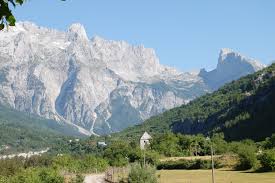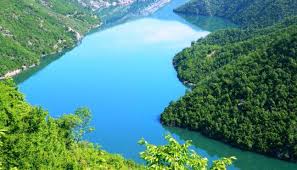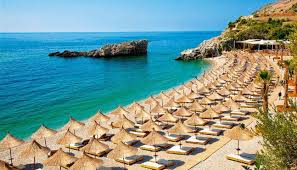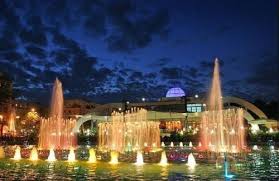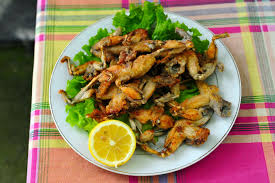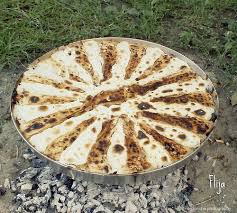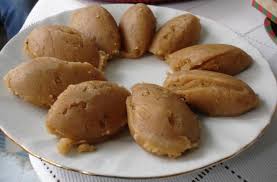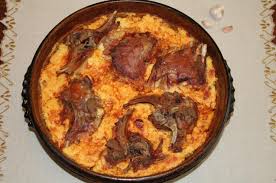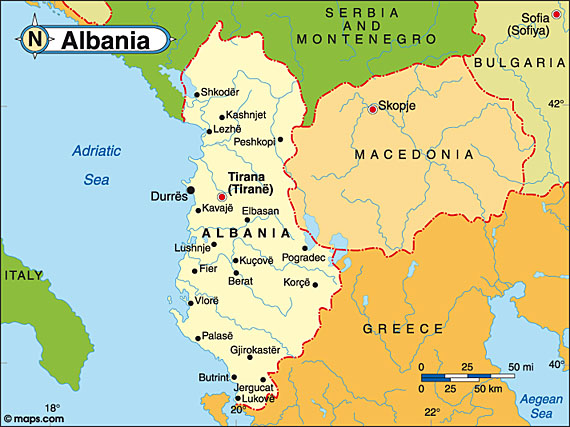Geography
Albania has a total area of 28,748 km2 (11,100 sq mi). It shares a 186 km (116 mi) border with Montenegro to the northwest, a 112 km (70 mi) border with Kosovo to the northeast, a 181 km (112 mi) border with Macedonia to the north and east, and a 212 km (132 mi) border with Greece to the south and southeast. Albanias coastline length on the Adriatic Sea and the Ionian Sea is 476 km (296 mi). The lowlands of the west face the Adriatic Sea and the strategically important Strait of Otranto, which puts less than 72 km (45 mi) of water between Albania and the heel of the Italian "boot" (links Adriatic Sea to Ionian Sea and Mediterranean Sea) With the exception of the coastline, all Albanian borders are artificial.
They were established in principle at the 1912-1913 conference of ambassadors in London. The country was occupied by Italian, Serbian, Bulgarian, Austro-Hungarian, Greek, and French forces during World War I, but the 1913 boundaries were essentially reaffirmed by the victorious states in 1921. Division of the lake district among three states required that each of them have a share of the lowlands in the vicinity. Such an artificial distribution, once made, necessarily affected the borderlines to the north and south. The border that runs generally north from the lakes, although it follows the ridges of the eastern highlands, stays sixteen to thirty-two kilometers west of the watershed divide.
Because negotiators at the London conference declined to use the watershed divide as the northeast boundary of the new state of Albania, the Albanian population of Kosovo was incorporated into Serbia. In Albanias far north and the northeast mountainous sections, the border connects high points and follows mountain ridges through the largely inaccessible Prokletije, and further south Bjeshkët e Namuna (The Accursed Mountains). For the most part, there is no natural boundary from the highlands to the Adriatic, although Lake Shkodër and a portion of the Buna River south of it were used to mark Albanias northwest border. From the lake district south and southwest to the Ionian Sea, the countrys southeast border goes against the grain of the land, crossing a number of ridges instead of following them. There are four main geographical regions in Albania: the Northern Mountain Range (Albanian: Krahina Malore Veriore) (the Albanian part of the Prokletije), the Southern Mountain Range, the Western Lowlands (Albanian: Ultësira Bregdetare), and the Central Mountain Range (Albanian: Krahina Malore Qendrore).
With its coastline facing the Adriatic and Ionian seas, its highlands backed upon the elevated Balkan landmass, and the entire country lying at a latitude subject to a variety of weather patterns during the winter and summer seasons, Albania has a high number of climatic regions for so small an area. The coastal lowlands have typically Mediterranean weather; the highlands have a Mediterranean continental climate. In both the lowlands and the interior, the weather varies markedly from north to south. The lowlands have mild winters, averaging about 7 °C (45 °F). Summer temperatures average 32 °C (90 °F), humidity is low. In the southern lowlands, temperatures average about 5 °C (41 °F) in the winter and 30 °C (86 °F) during the summer.
Population
Muslims 1,646,236 58.79%
Sunni Muslims 1,587,608 56.70%
Bektashi 58,628 2.09%
Christians 475,629 16.99%
Catholics 280,921 10.03%
Orthodox 188,992 6.75%
Protestants 3,797 0.14%
Other Christians 1,919 0.07%
Atheists 69,995 2.50%
Prefer not to answer 386,024 13.79%
Believers without denomination 153,630 5.49%
Not relevant/not stated 68,022 2.43%
Transport
Transport in Albania has undergone significant changes in the past two decades, vastly modernizing the countrys infrastructure. Improvements to the road infrastructure, urban transport, and air travel have all led to a vast improvement in transportation. These upgrades have played a key role in supporting Albanias economy, which in the past decade has come to rely heavily on the construction industry.
RAILWAYS
Total: 447 km
Standard gauge: 447 km 1,435 mm (4 ft 8 1⁄2 in) gauge (2006)
Railway links with neighbouring countries:
HIGHWAYS
• Total: 18,000 km
• Paved: 12,920 km
• Unpaved: 5,080 km (2002 est.)
In recent years, a major road construction spree took place on the main state roads of Albania, involving the construction of new roadways, putting of contemporary signs, planting of trees, and related greening projects. Works on most highways are completed, though they remained unfinished between 2011 and 2013 as per lack of funds.
After the fall of communism in 1991, Albania began to revamp its primitive road infrastructure by building the first highway in Albania, SH2 connecting Tirane with Durrës. Since the 2000s, main roadways have drastically improved, though lacking standards in design and road safety.
At present, major cities are linked with either new single/dual carriageways or well maintained roads. There is a dual carriageway connecting the port city of Durrës with Tirana, Vlorë, and partially Kukës. There are three official motorway segments in Albania: Thumanë-Milot-Rrëshen-Kalimash (A1), Levan-Vlorë (A2), and partly Tirane-Elbasan (A3). Most rural segments continue to remain in bad conditions as their reconstruction has only begun in the late 2000s by the Albanian Development Fund.
AIRPORTS
Total: 8 (2008)
Tirana International Airport is the only international airport in Albania. In 2005, TIA was given to an American-German consortium for a 20-year concession period. Despite the considerable modernization of the airport, prices are among the highest in Europe as per the monopoly over Albanian airspace, and limited carrier choices. As a result, low cost carriers are discouraged from entering the Albanian market, while neighboring countries offer much lower prices from their primary and secondary airports.
A number of regional airports have been renovated but are not operational. In 2014, it was announced that a new airport would be built in Southern Albania in the future.Kukës Airport was opened in 2008, making this the second civilian airport in Albania. A local news paper announced on March 16, 2007 that the Italian government would help rebuild the airport in Gjirokastër. The airport would be dual functional, both a civilian and military airport. Currently there are two feasibility studies being conducted for airports in Vlora and Korça. The plan for Saranda Airport was completed however there is no known investor willing to put in money at the time.
Greetings
|
English |
Shqip (Albanian) |
|
Hello (on phone) |
|
|
Reply to How are you? |
Mirë, falemenderit, po ju? (frm) |
|
Ka shumë kohë që sjemi parë |
|
|
Si ju quajnë? (frm) |
|
|
Paçim |
|
|
Gëzuar! |
|
|
Unë kuptoj |
|
|
Po |
|
|
Jo |
|
|
Ndoshta |
|
|
Unë nuk e di |
|
|
Mundeni të flisni pak më ngadalë, ju lutem? (frm) |
|
|
Mundeni ta përsërisni, ju lutem? (frm) |
|
|
Mund ta shkruash ju lutem? (frm) |
|
|
A flisni anglisht? (frm) |
|
|
Do you speak Albanian? |
A flisni shqip? (frm) |
|
Yes, a little |
Po, pak |
|
Më fal! |
|
|
Më fal! |
|
|
Falemenderit |
|
|
Reply to thank you |
|
|
A doni të kërceni? |
|
|
Të dua |
|
|
Zhduku! |
|
|
Lëmë rehat! |
|
|
Ndihmë! |
|
|
Zjarr! |
|
|
Ndalo! |
|
Sights
Cuisine
Posters
Map
Itineraries
| Sr. No. | Itinerary Name | File |

